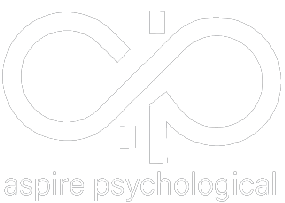Insomnia is characterized by difficulty falling asleep and/or staying asleep. While may individuals can identify with insomnia as a symptom, it is considered to be chronic when it happens on at least half the nights of the week and for at least 3 months. Additionally, the individual must be experiencing daytime consequences (fatigue, concentration, or mood problems) and it needs to cause distress. The insomnia cannot be attributed to another problem such as medication or substances.
Individuals often think they struggle with insomnia after having one or two difficult nights with their sleep, but that is not the case. It is primarily a disorder of experience and complaint and therefore, the DSM-5 does not include any quantitative component to it. Individuals with insomnia usually do not participate in sleep studies to receive the diagnosis. However, sleep studies might be conducted to rule-out other sleep disorders that might cause or coexist with the insomnia. Research has indicated that people suffer for at least a decade before they get help for it. CBT-I is considered to be the first line of treatment for insomnia and is highly effective for individuals struggling with this disorder.
It is important that while the individual is treated for their insomnia, they get screened for other sleep disorders such as sleep apnea. This is because another sleep disorder might cause or worsen the insomnia symptoms, or the insomnia might worsen the other sleep disorder.
During the intake session, the therapist will conduct a thorough overview to better understand your sleeping struggles. They may ask you many questions, including but not limited to your sleep schedule, sleep complaints, other sleep disorders and mental health disorders, and medication history. The therapist will ask the client to log their sleep schedule on a sleep diary before their first session. This is because it is imperative to monitor behavior you would like to change. It is important when completing the sleep diary that it is conducted within one hour of waking up since memory typically degrades as time passes. If you forget and remember at a later time, it is best to just skip that day. If you find yourself forgetting too often to complete the diary, your therapist will work with you to troubleshoot so as to avoid this from reoccurring throughout treatment. Moreover, sleep diaries are usually estimates, and not exact. For treatment, we do not encourage individuals to clock monitor.
Providing psychoeducation is helpful in allowing the client to better understand their issue at depth. During the first treatment session, the therapist will focus on establishing rapport and cheerleading the client for completing their sleep diary. If the client has not completed it, the therapist will work with the client on troubleshooting. The therapist continues to explain what causes insomnia using the 3 P Model, which refers to predisposing, precipitating, and perpetuating factors. Unfortunately, there has not been much research regarding predisposing factors. Precipitating factors refers to the actual stressor in a person’s life. CBT-I targets perpetuating factors which include homeostatic disruption- reduced sleep drive, circadian disruption- improper sleep scheduling, and hyperarousal- conditioned arousal. Further, the therapist will work with the individual to calculate a time-in-bed prescription and derive a sleep schedule. They will also assign stimulus control, a wind down period where the client relaxes one hour before bed, and if needed, sleep hygiene. Individuals with insomnia associate their bedroom with negativity and frustration. Thus, with stimulus control, the focus is to learn to reassociate the bedroom as a place of comfort and restful sleep. The therapist also discusses sleep restriction which limits time spent in bed in order to increase the drive to sleep and temporarily increase daytime fatigue.
If a client appears better by session two, the therapist will work with them on relaxation and mindfulness techniques and teach them how to extend their time in bed. These include progressive muscle relaxation or breathing exercises. In terms of the cognitive component of this therapy, individuals with insomnia often experience inaccurate thoughts about their sleep which lead to behaviors that make sleep more difficult, thereby reinforcing the irrational thoughts. With CBT-I, the therapist helps the client work on identifying and challenging these thoughts and creating more adaptive ones.
During session three, the therapist works with the client on a letter to oneself regarding what has helped them in the past and what they want their future self to remember if/when they relapse. If appropriate, termination is also discussed. In the final session, sleep diaries are reviewed and the therapist ensures the client knows how to make a sleep restriction or extension if necessary. CBT-I has been shown to be effective in helping individuals with insomnia and can be a gamechanger for those struggling.





